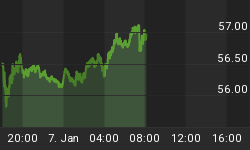The present state of the US economy has a number of economic commentators pointing an accusing finger at Bernanke. He has been charged with damaging the economy when he cut the Fed rate in September 2007 from 5.25 per cent to 2 per cent. We are told that this amounted to a negative rate which damaged investment*.
Others argue that Bernanke betrayed Volcker and Greenspan's legacy of maintaining price stability as a solid foundation for economic growth. All in all, Bernanke stands indicted for "creating excess dollars" that are now creating a monetary crisis.
The one thing that is generally overlooked is that Bernanke is a good Keynesian. If employment starts falling and idle capacity increases, then the thing to do is cut interest rates and so expand demand. Despite fact that this policy is built on discredited economic fallacies it is still being taught in the economic faculties.
Furthermore, Greenspan had to know that Bernanke is a true-blue Keynesian. Therefore it is a bit rich for Greenspan to start criticising Bernanke's Keynesian thinking. I can only assume that Greenspan is using Bernanke to direct opinion away from the shortcomings of his own monetary policy when he headed the Fed.
Volcker is not much better. He has been greatly overrated by commentators who claim that in 1980 he slew the "dragon of inflation". The truth be told, he did nothing of the kind. All he really did was slow down the rate at which the value of the dollar fell. The difference between Volcker and Bernanke, therefore, is merely one of degree and nothing else.
It is true that Bernanke has declared that he too recognises the need for a stable price level. But like the Keynesian he is, using inflation to price people back into work is his default position. For this he has also been accused of displaying a "Phillips-curve mentality" that that favours inflation over price stability.
What his critics fail to see is that a policy of price stability is bound to create an inflationary trend that must eventually result in recession. In a progressing economy -- one in which the ratio of capital to labour is rising -- there would be a secular fall in prices as technology applied through investment reduced unit costs. This is what happened in Britain from about 1874 to 1896.
When a central bank tries to keep the rate of monetary growth in line with the growth of output it is actually laying down the foundations for a future recession. Those who dispute this are basing their case on the assumption that capital is homogeneous and malleable. In fact, capital is heterogeneous with much of it being highly specialized. What we have then is a highly complex production structure that is sensitive to changes in interest rates and the monetary expansion.
So the accusation that Bernanke is "creating excess dollars" is one that cannot stand considering that his accusers mean that the money supply is growing faster than output. In a situation where the only money is credit and paper there can be no objective means by which the 'correct' quantity of money can be calculated. Therefore the opinion that Bernanke's monetary policy could sink the US economy applies equally to nearly all of his critics, especially those who have stated:
Over the past five years the greenback has lost 40 percent of its value. Oil is close to $140 a barrel. And gold, now trading above $900 an ounce, is warning that if the Fed fails to stop creating excess dollars, inflation could rise to 6 or 7 percent.
What is overlooked here is that monetary expansion is inflation, whether or not it exceeds the growth in output. The following are the economic fallacies that created current economic conditions:
• Monetary expansion is necessary to counter demand deficiency. But demand deficiency is one of the oldest fallacies in economics.
• Stable prices are necessary for sustained growth.
• Monetary expansion does not discoordinate the structure of capital and relative prices.
• It is safe to assume that capital is homogeneous and malleable.
• The so-called business cycle is a natural outcome of the workings of the market.
*negative rate occurs when inflation exceeds the rate of interest.
















